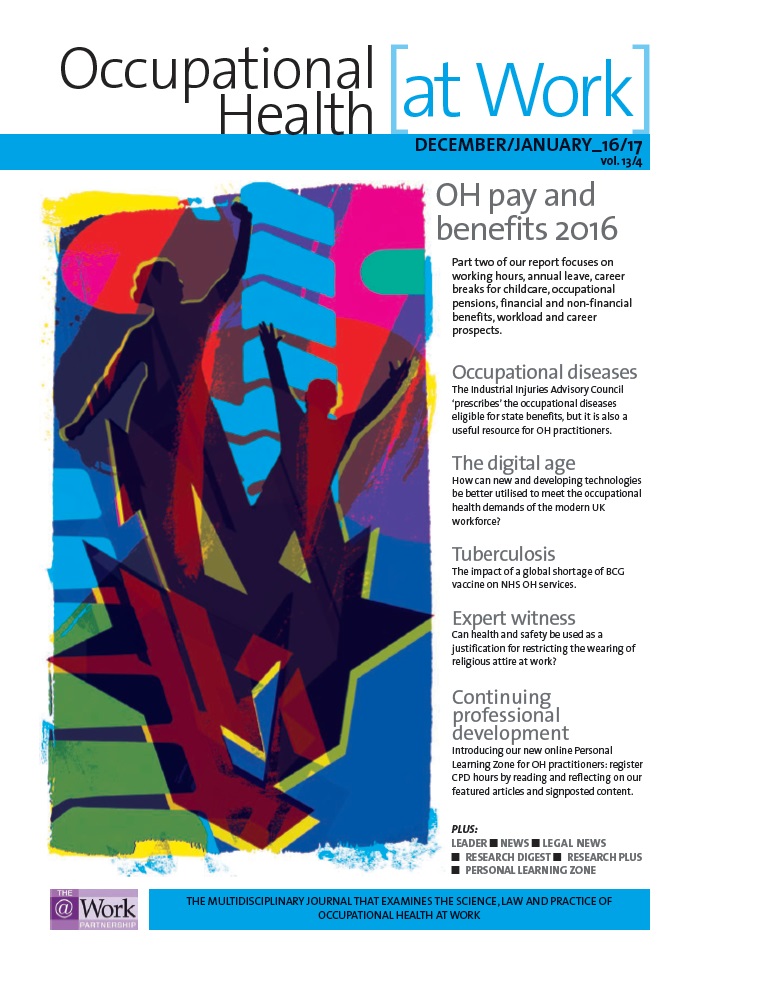December/January 2016/2017 (vol. 13/4)
ContentsFeaturesNewsLegal
NewsResearch DigestResearch PlusCPD
Research Plus
Low-back pain sickness absence
Various work and non-work factors significantly predict duration of sickness absence after six weeks off work with low-back pain (LBP), this systematic review of 22 papers found. Previous reviews have identified factors that predict sick leave during the ‘acute’ phase of LBP absence (0–6 weeks’ absence) – such as recovery expectations, pain, disability, workplace physical factors, modified duties and workplace psychosocial factors. This review examined the ‘sub-acute’ (6–12 weeks’ absence) and ‘chronic’ phases (more than 12 weeks’ absence). Delayed return to work (RTW) was associated with: older age in both the sub-acute and chronic phases (moderate evidence); pain intensity in the chronic phase (moderate), but not in the sub-acute phase (strong evidence); and delayed referral for intervention in the chronic phase (strong). Quicker RTW was associated with healthcare interventions in the chronic and sub-acute phases (moderate); recovery expectations in the sub-acute phase (moderate) with insufficient evidence in the chronic phase; and lower physical work demands in the chronic phase (moderate) with insufficient evidence in the sub-acute phase. There was insufficient evidence on the impact of modified duties on RTW in the chronic phase and no published evidence for their impact in the sub-acute phase. There was a lack of research evidence on psychosocial work environment factors, such as social/co-worker support and job satisfaction, in both phases.
Journal of Occupational Rehabilitation 2016; online first: doi: 10.1007/s10926-016-9666-x.
Occupational Health at Work December/January 2016/2017 (vol. 13/4) pp41



